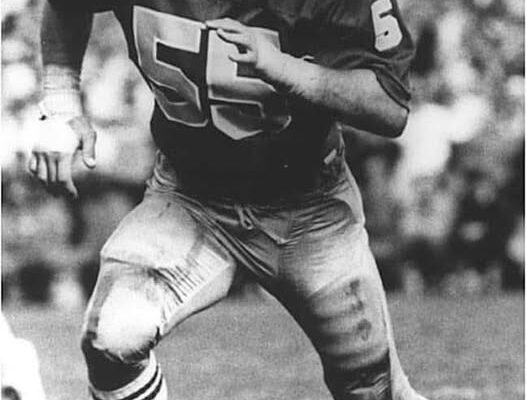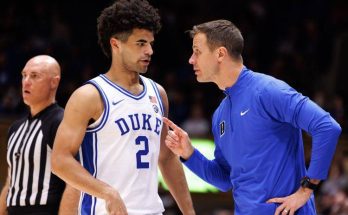The countdown to the highly anticipated Irish vs. Convicts match has reached 54 days. This isn’t just any game on the calendar. It’s a collision of tradition and fire, a clash steeped in rivalry, passion, and pride. The fans know it. The players feel it. And for many who have laced up their cleats for either side, it’s a legacy that lives forever. While the stadium will be buzzing on game day with chants, cheers, and the thunderous rhythm of marching bands, tonight we pause to honor a legend who once stood in the heart of battle wearing the gold helmet, embodying everything that Notre Dame football has stood for over generations.
This tribute is to a titan of the late 1970s defense, a player whose very presence struck fear into offenses and inspired his teammates. This man wasn’t just a cog in the machine—he was the engine. A crucial piece of the famed 6-2 defensive scheme, he operated from the trenches with the heart of a lion and the mind of a field general. In an era defined by toughness, grit, and smash-mouth football, he stood tall as one of the most formidable middle guards and linebackers to ever grace the gridiron in South Bend.
In football lore, the 6-2 defense has its place as a rugged, aggressive formation that prioritizes stopping the run and getting physical at the line of scrimmage. It requires discipline, awareness, and most importantly, muscle. It’s a scheme not for the faint-hearted, but for the fierce—those who welcome contact, relish in the chaos, and can command space in the most crowded of trenches. In the late 1970s, Notre Dame mastered this defense. And at its core was our honoree, a player whose tenacity and leadership made him indispensable. His instincts were unmatched, his motor endless, and his ability to plug gaps and shed blocks was textbook. But what truly set him apart was his understanding of the game, his knack for knowing exactly where to be, and when.
As a middle guard, his job was to disrupt the offensive line’s plans before they could even unfold. He did more than just hold his ground—he attacked. Whether it was taking on double teams, breaking through to force hurried decisions by the quarterback, or stringing out the run to the sideline, his fingerprints were on nearly every defensive stand. And when asked to slide into a more traditional linebacker role, he adapted without hesitation. His agility and vision allowed him to roam sideline to sideline, to drop into coverage when needed, and to square up on ball carriers with bone-jarring precision.
He was a football player in the purest sense of the word—no gimmicks, no flash, just hard-nosed excellence. A work ethic forged in sweat and sharpened under the bright lights of Saturday evenings. Coaches revered him for his reliability and hunger. Teammates leaned on him, not just because he made plays, but because he made everyone around him better. He was the anchor on a defense that defined its era, a time when opponents knew that to play Notre Dame was to earn every yard the hard way.
What makes this tribute even more poignant is how his legacy echoes through the decades. Ask former teammates and they’ll talk about his relentless pursuit of perfection, his voice in the huddle, and how his demeanor set the tone every practice, every game. He wasn’t the loudest, but when he spoke, people listened. He wasn’t always in the highlight reels, but he was always in the play. That kind of presence—unshakable, committed, unselfish—is the lifeblood of championship teams. And he was the kind of player that championship dreams are built on.
The late 1970s were a defining stretch for Notre Dame. The Fighting Irish were not just trying to win games—they were trying to shape a dynasty. And while names on the offensive side of the ball often draw more attention, it’s players like this middle guard, this linebacker, this hoss, who deserve every bit as much credit. His contributions were not always glamorous, but they were vital. He fought for every inch, in every down, against every opponent.
Opposing coaches would scheme all week to try and neutralize him. Double teams were standard, trap blocks were drawn up, and yet he would consistently beat the plan. He could shed blockers like a snake shedding skin—quickly and decisively. He had that rare blend of strength and speed, and he knew how to use leverage like a pro. He understood angles and timing. His tape was filled with instances where he simply outworked the man across from him. More than that, his film shows a player who played with heart. He never took a play off. He never quit on a pursuit. His motor ran until the final whistle.
There is a quiet dignity to the way he played. No celebration dances, no chest-thumping for the cameras—just a look to his teammates and a jog back to the huddle. It was a mindset. A belief that the job wasn’t done after one tackle, or one stop. It was about the next play. And the next. And the next. That kind of mentality is rare, even among the elite. It’s the essence of greatness.
And for all his football ability, it’s the character of the man that truly stands the test of time. Off the field, he was humble and respectful, a student of the game, a loyal friend, and a mentor to younger players. He knew what it meant to wear the gold helmet, to carry that legacy, and he never took it for granted. When he spoke to recruits or younger teammates, he didn’t talk about individual accolades—he talked about team. He talked about tradition. About being part of something bigger than yourself.
In moments of adversity, when the scoreboard wasn’t favorable or the crowd was deafening, he was a calming force. His presence reminded everyone that Notre Dame doesn’t back down. That Notre Dame fights until the very end. He embodied the very spirit of the Fighting Irish—not just in how he played, but in how he lived.
Years may pass, and new stars will rise. The game evolves, schemes change, players come and go. But the impact of this middle guard from the 1970s remains etched in Notre Dame’s history. He is part of the foundation upon which today’s team stands. He helped write the story that new chapters now continue. And when players today suit up for the Irish vs. Convicts game, they do so walking in the footsteps of warriors like him.
There’s something poetic about the connection between generations in college football. The way tradition threads its way through time, linking the present to the past. This upcoming matchup will feature athletes faster, perhaps stronger, maybe more technically refined. But their success is, in many ways, made possible by those who laid the groundwork. Like our honoree, who faced down offensive linemen like mountains and never flinched.
So tonight, as the lights glow on the practice fields and preparations ramp up for what promises to be a fierce game in 54 days, we tip our caps to a man who helped build the house. A man whose grit and leadership helped define an era. A man who stood in the center of one of the most ferocious defenses in Notre Dame history and made it better every time he stepped on the field.
He may never have craved the spotlight, but he earned it. He may not have chased awards, but he earned respect. He may not have worn a cape, but to the teammates who played beside him, he was nothing short of heroic.
This tribute isn’t just for what he did, but for how he did it. With class. With fire. With loyalty to the blue and gold. As we look ahead to the next battle, we remember the warrior who helped define what it means to be Irish. Forever etched in memory, forever part of the fight.


